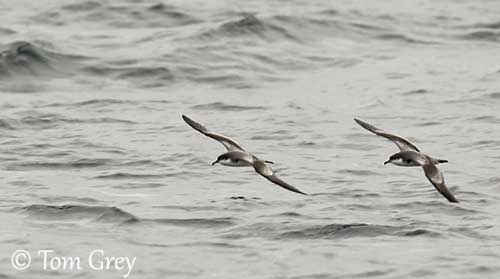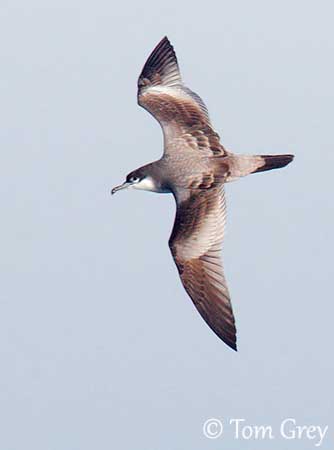
Fr: Puffin de Buller
Ang: Buller's Shearwater
Maori: Rako
All: Graumantel-Sturmtaucher
Esp: Pardela Dorsigrís
Ita: Berta di Buller
Nd: Bullers Pijlstormvogel
Sd: Gråmantlad lira
Photographers:
Roger Ahlman
Pbase Galleries Peru and Ecuador
Tom Grey
Tom Grey's Bird Pictures
Ken Havard
My Bird Gallery & Flickr gallery 1 & Flickr gallery 2
Text by Nicole Bouglouan
Sources:
HANDBOOK OF THE BIRDS OF THE WORLD vol 1 by Josep del Hoyo-Andrew Elliot-Jordi Sargatal - Lynx Edicions - ISBN: 8487334105
BirdLife International (BirdLife International)
New Zealand bird status between 2008 and 2012
Bird Web (Seattle Audubon Society)
What Bird-The ultimate Bird Guide (Mitchell Waite)
Tiritiri Matangi Open Sanctuary
Page family Procellariidae
Summary cards
Buller’s Shearwater
Ardenna bulleri
Procellariiformes Order – Procellariidae Family
INTRODUCTION:
The Buller’s Shearwater is a bird of the open ocean. It breeds on only a few small islands in New Zealand, but the species is a transpacific migrant. After the breeding season, it migrates across the Pacific Ocean from Japan to the west coasts of North America.
This species has nocturnal foraging behaviour and nests in burrows. Its dark grey M-pattern is well visible when it flies gracefully above the sea.
DESCRIPTION OF THE BIRD:
Biometrics:
Length: 46 cm
Wingspan: 97-99 cm
Weight: 340-420 g
The Buller’s Shearwater is a fairly large bird. The upperparts are brown-grey. The upperwing shows blackish-brown feathers forming an M-pattern. The wedge-shaped tail is darker and contrasts strongly with the brown-grey rump.
The underparts are white, including the underwing, although we can see a narrow, dark grey trailing edge, usually broader at wing tip. The leading edge is narrower and reduced to distal portion. Vent and undertail-coverts are white too.

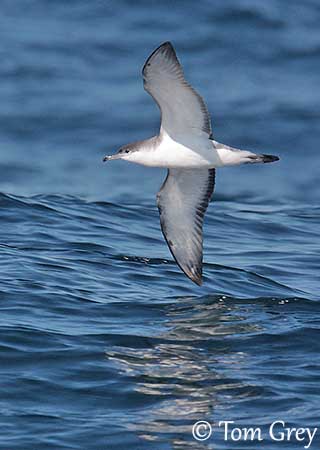
The head is dark brown to blackish-brown, becoming paler over the hindneck when joining the brownish-grey mantle. The dark crown contrasts with the white cheeks. Chin and throat are pure white.
The long, slender hooked bill is blackish-grey with darker tip. The eyes are dark brown. Legs and webbed feet are mainly pink inside, and dark brown along the outer side of tarsus and outer toe.
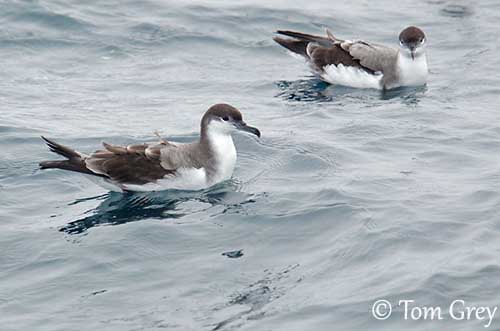
Both sexes have similar plumage, but the female has shorter bill and she is slightly smaller than male.
The juvenile resembles adults.
RANGE:
The Buller’s Shearwater breeds on the Poor Knights Islands off Tutukaka in Northern New Zealand. After the breeding season, it migrates N to winter in subarctic Pacific waters, and then, it moves S along the W coasts of North America. They may occur in large numbers off S California in August.
Immature birds may spend the breeding season in their wintering grounds S to Chile.
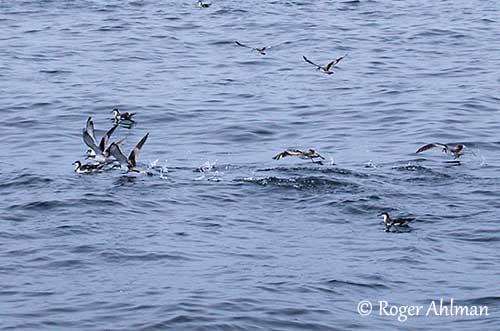
Feeding group off Lima
Peru
HABITAT:
The Buller’s Shearwater is a marine, pelagic species. It spends most time at sea, and approaches land only for breeding.
It nests in burrows and rock crevices, usually concealed under thick vegetation.
CALLS AND SONGS: SOUNDS BY XENO-CANTO
The Buller’s Shearwater utters wailing, cooing and groaning sounds at the colony, but it is usually silent at sea. A great variety of sounds such as series of rapidly repeated crows, cackles, trills and cat-like mews can be heard during the breeding season.
During the period prior to the laying, the mated pairs often duet from inside the burrow.
BEHAVIOUR IN THE WILD:
The Buller’s Shearwater has nocturnal feeding habits in order to avoid piracy from larger seabirds, and predation on land near the burrow.
They start flying soon after sunset. They can be noisy while foraging on the surface.
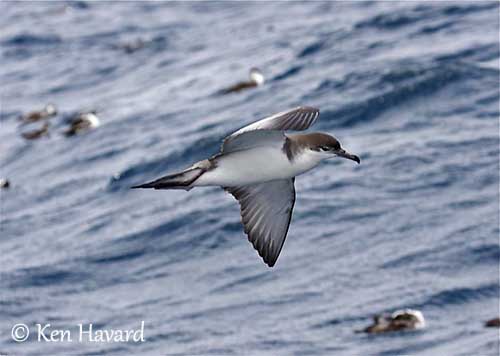
Auckland region - North Island
New Zealand
The Buller’s Shearwater feeds on krill, squid, small fish and jellyfish. The preys are caught below the surface with the bill. It also feeds on the wing, or may dip the head below the surface while swimming. It does not dive or plunge. It may join mixed-species foraging flocks.
It forages over the continental shelf off North and South Islands in New Zealand, and may fly to the Chatham Islands too.
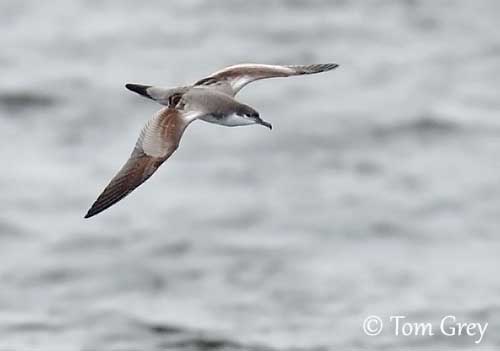
The Buller’s Shearwater nests in large, dense colonies. When they return to their breeding grounds, the males perform courtship displays to attract the females, and they also clean out the burrow before the laying. The colonies are active at night. The birds fly over the colony as darkness falls. They are very noisy and each bird calls loudly while passing above its own burrow, expecting a response from its mate. The individual variations in voice and calls could help the bird to find its burrow.
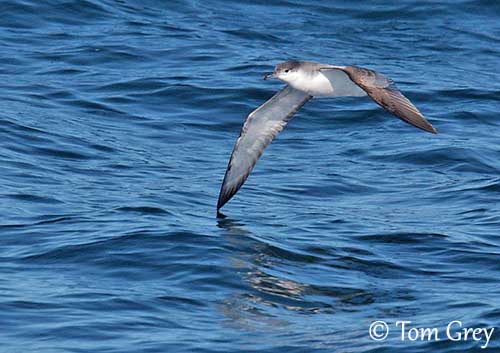
The nest-site is defended against intruders with calls, hisses and threat displays with the bill wide open. Some territorial conflicts may occur, but the fights are not intense or violent.
The sexual activity takes place inside the burrow. Courtship consists mainly of “Billing” while oil is dripping down the bill. Both mates also perform mutual preening. Long calls are given by both sexes. They are monogamous.
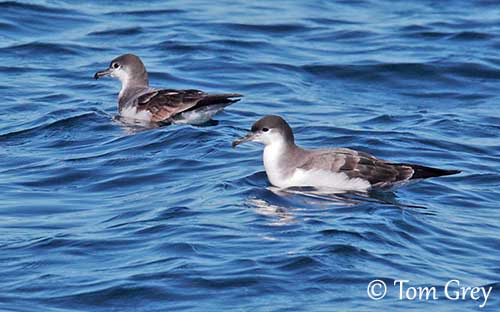
The Buller’s Shearwater migrates after breeding to the North Pacific Ocean. Then, it moves S down the West coasts of North America.
The flight is deep, with powerful wingbeats and long glides. In order to take off from the colony, it may climb into trees for easier take-off. In strong winds, it soars and skims the surface with rare wingbeats.
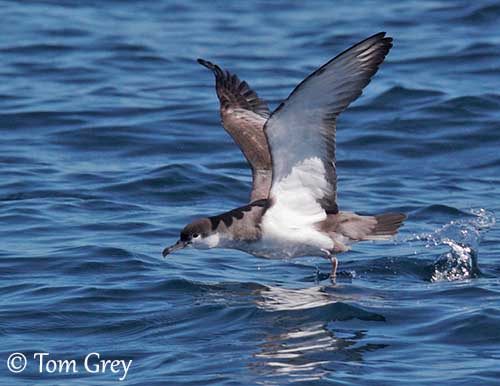
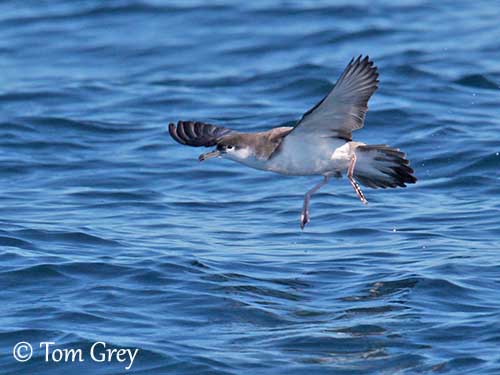
REPRODUCTION OF THIS SPECIES:
The breeding season occurs from September to May.
The Buller’s Shearwater breeds in colonies. The burrow is dug on well-drained slopes or in clay soil among rocks. The nests are under tall forest or under low coastal shrubs.
There is a thin lining of leaves, twigs and pebbles in the nest-chamber, at the end of the burrow of 60 cm to 3 metres long.
The female lays a single large white egg in late November. Both parents incubate during 49-51 days, with stints of 4 days. At hatching, the chick has grey down. Both adults feed it by regurgitation. The young bird leaves the colony about 14 weeks after hatching and heads to the sea.
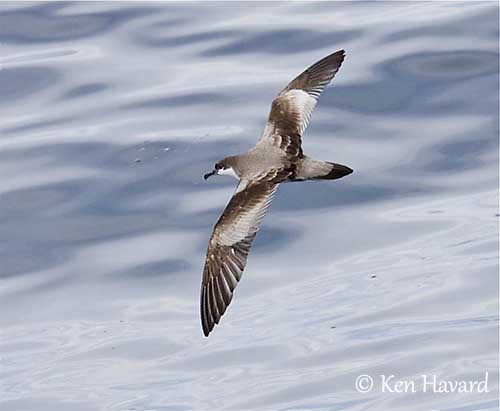
Kaikoura - South Island
New Zealand
PROTECTION / THREATS / STATUS:
The Buller’s Shearwater breeds on predator-free islands in New Zealand, although new mammalian species have been introduced. Oil spills at sea are a major threat for these marine birds, and they can be trapped during fishing operations.
The populations are suspected to be stable or decreasing, and the species has restricted breeding range.
The Buller’s Shearwater is currently listed as Vulnerable, with a population estimated at 2,500,000 individuals with 200,000 pairs in Poor Knights islands.
